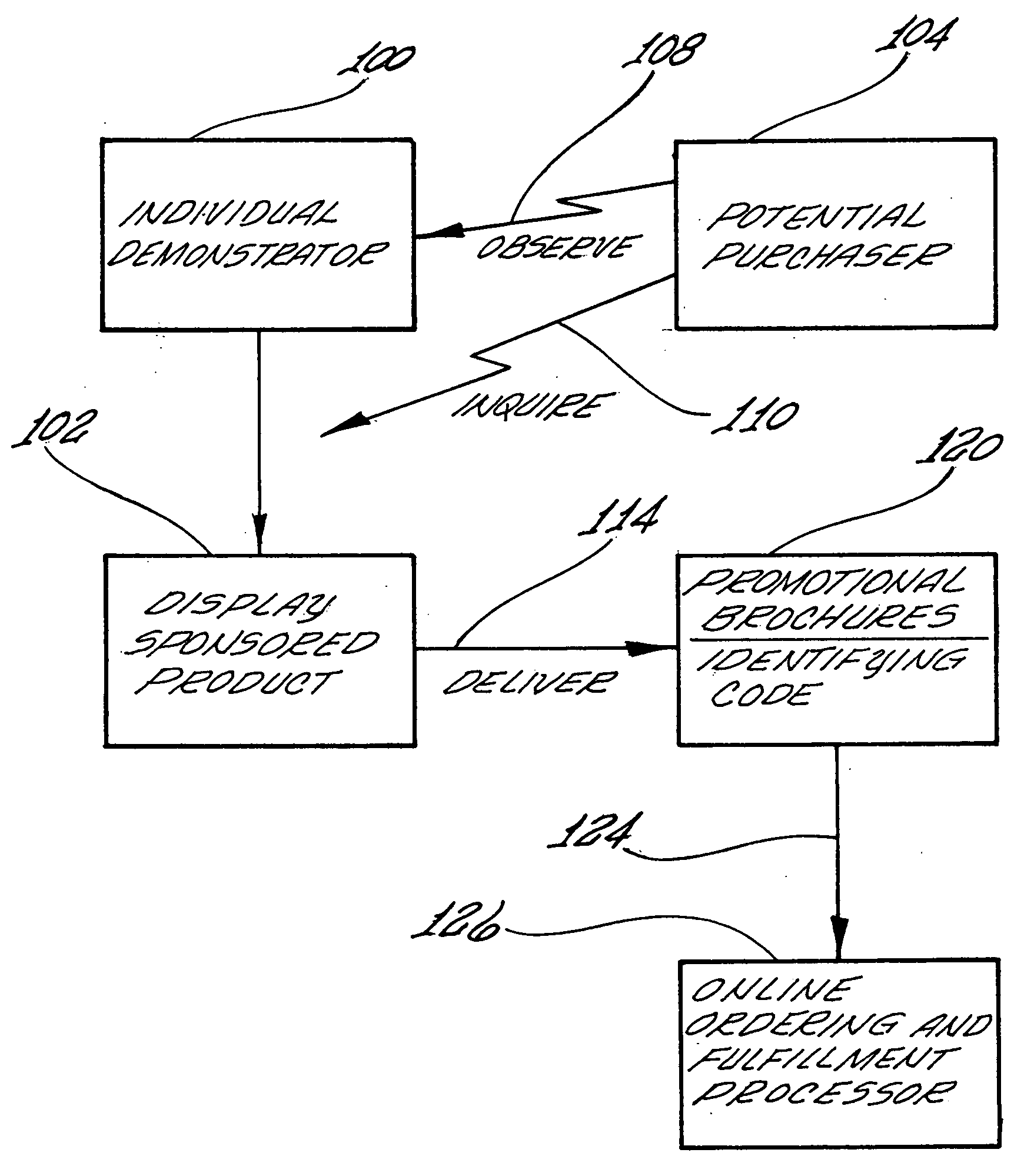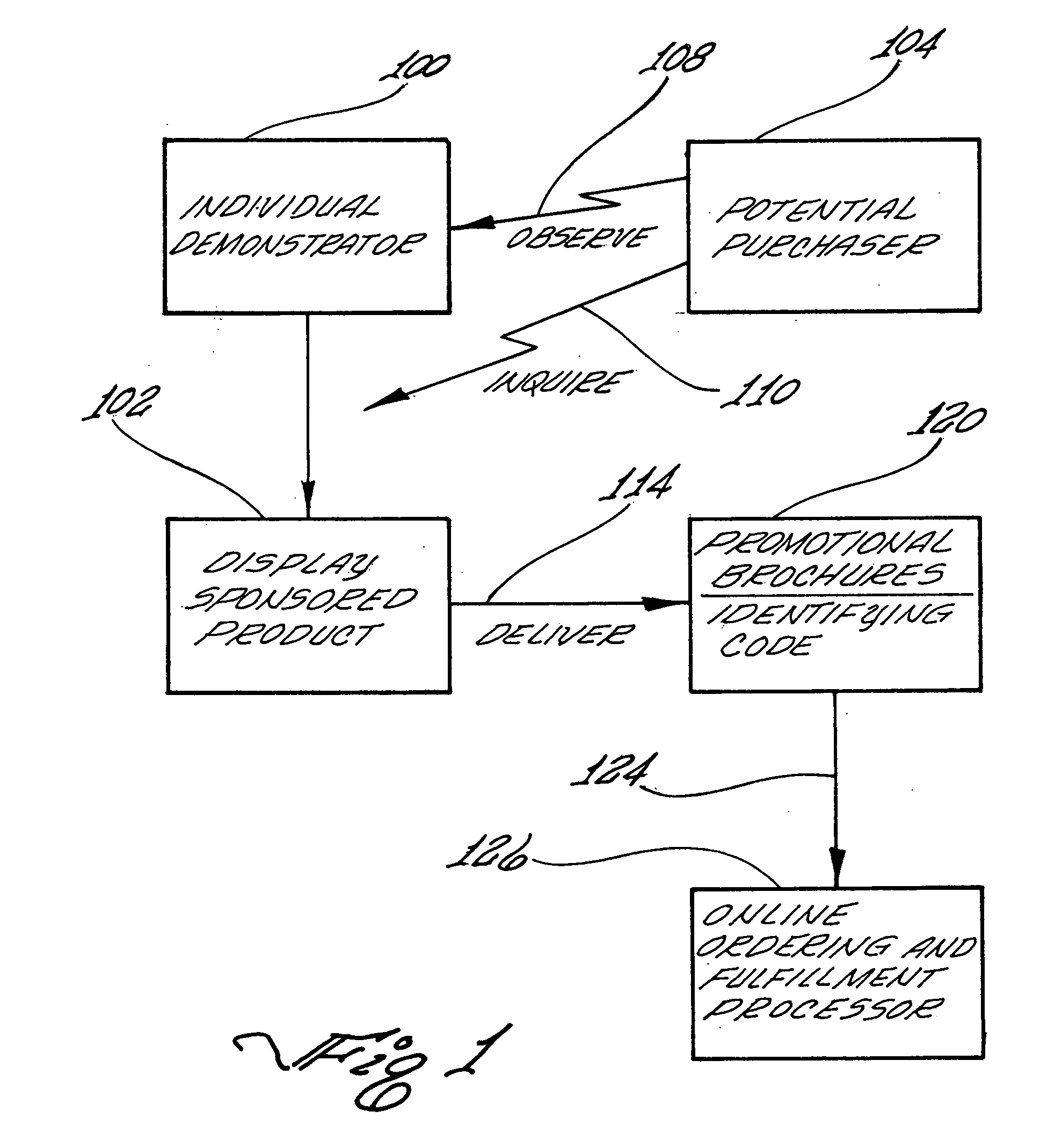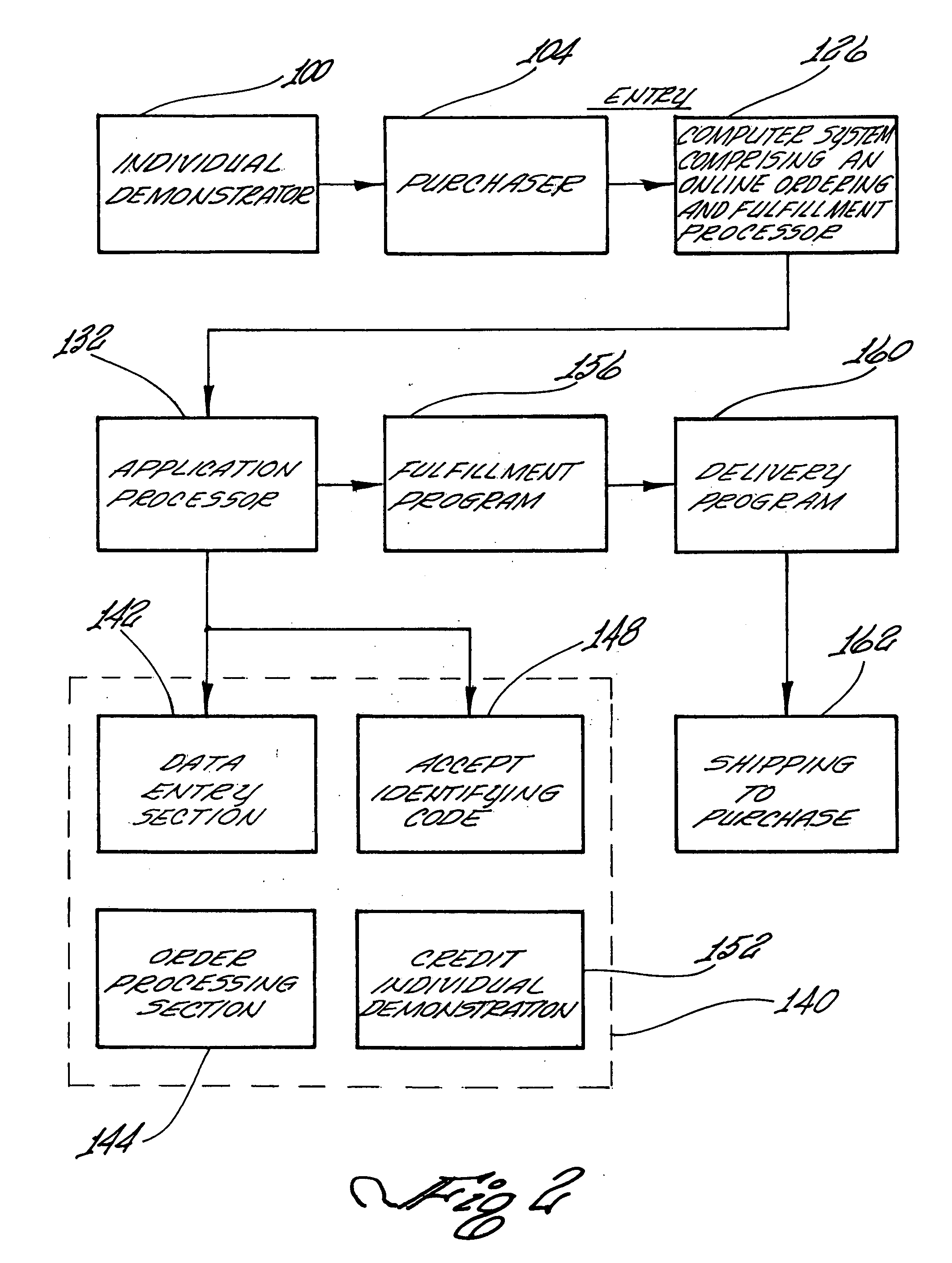Consequently, the public is constantly subjected to an informational onslaught.
Against and providing natural resistance to all that, however, are peoples' natural limits of time, attention and tolerance to devote in their even attempting to differentiate amongst and within the massive streams of information ever-targeting them.
While the advertising industry is only too happy to rise to the challenge by selling ever more conventional advertising largely un-tied to the intended result, that largely generates more over-saturation of the
consumer with unsolicited information.
The response, however, has been to escalate the
information overload, including by information purveyors like traditional retail product and service providers rapidly augmenting their on-site, e.g. in-store presentations with additional sales channels, such as mail order and catalogues, which again further compounds the total informational overload on consumers.
The result of those concerted hyper-competitive efforts is that the consumers and purchasers, from their vantage point, understandably feel overwhelmed and naturally ignore if not resent and
resist today's informational bombardment ever-targeting them in trying to
gain their personal attention and comprehension.
While
the internet has unquestionably provided profoundly greater
accessibility to vastly more sources of goods and / or services available for resale,
the internet's own information-escalating attributes have ironically caused its merchants and other information purveyors to take on expensive over-head standard for traditional businesses and once assumed readily bypassed via the e-commerce model.
While those resource requirements may have in the past been reliably bypassed by the “virtual store” and e-model, offering goods and services conceptually on a world-wide and “24-7” basis and without any physical store presence,
the internet itself has drastically compounded the state of
information overload.
Accordingly, in their quest to
gain attention and visits to their sites, both store and internet purveyors of promotional information are increasingly reinstating significant overhead in the form of “pull through advertising.” Thus, internet purveyors are now buying print, broadcast and other media advertising in trying to draw consumers to their sites of commerce amidst the massive informational overload of the
consumer-which inherently adds overload.
Unfortunately, a vast number of information purveyors have not stopped with such largely expensive, ineffective, and in the aggregate, counter-productive activity.
Today, a myriad of purveyors are also endeavoring to capture the attention and wallets of the already informationally overloaded consumers, by a variety of not only ineffective, but also counter-productive, means.
The internet has become literally plagued with virtual sensory assaults on potential consumers, by employing programs to target the consumers' computers en masse.
Even more counterproductive is the proliferation in the use of insidious programs designed to effectively
mass commandeer host computers.
Once both the free ware and piggy-backing disruptive
software have been downloaded, the
computer operation subsuming
software is often further engineered to frustrate its thereafter being uninstalled.
Computer owners are thus subjected to prolonged periods where their “pirated”computers” are rendered largely inoperable by pop-up “offers,” permanent screen content obstructing presences, and the like.
The computer owner is thus confronted with a lose / lose
scenario and understandably not pleased with its cause.
In the end, the “
consumer” typically never gets real value or benefit from their compelled purchase, just their
payment taken and accounts and computer exposed for further invasion.
In addition to those tactics being, at minimum, unethical if not unlawful, Bad Will—not Good Will—is engendered.
Those means, however, do not effectively meet the challenge as they are expensive and typically only marginally, at best, effective.
Not only is that expensive, but the costs tend not to be reliably correlated to actual sales results achieved.
Indeed, so amorphous and operationally haphazard is the operative relationship between search engines which charge fees for their page diversions of potential consumers on a charge-per-visit-hit basis, but a
cost benefit determination cannot be reliably made.
Also increasingly resorted to, and inherently unproductive, is the purchase of hard print, television and radio advertising to try to pull the consumer to their internet site—at great expense.
Ironically, such endeavors, in addition to bringing back expensive overhead once thought wholly avoided by the e-model and not corresponding to actual results, themselves add to the total
mass of information bombarding the consumer, making differentiation by the consumer from and amongst all available products, services and other promotional offerings, all the more difficult to perceive and over-all ineffective to achieve.
Internet e-commerce has thus become a victim of its own initially useful attributes, taking on the less productive and expensive attributes of the traditional business models.
Such over-proliferation of information disseminators all competing for consumer attention—both over the internet and otherwise has resulted in a revival by merchants, service providers and other information disseminating promoters, of resorting to very expensive, overhead increasing, and at best marginally effective, external marketing feeders central to traditional business models, although once thought fully by-passed under the e-commerce model.
That expensive increase in overhead, however, is not the only challenge resulting from re-instituting expensive feeder marketing once thought obviated via the internet e-model.
Traditional external feeder
modes, e.g. newspaper advertising of web sites, inherently are of limited effectiveness at generating product and
web site exposure, including since they must compete against, and thus tend to get lost amidst, the
mass of other similar attention seeking / mind numbing “information offerings.” It's certainly no wonder that the potential consumer, potential purchaser or purchaser often ignores such matter, when perceived at all, or resents and thus resists its attempted message.
To date, the prior art has not provided effective solutions.
None of the prior art anticipate, disclose, suggest or teach a system for originating and consummating sales comprising an individual demonstrator displaying a sponsored product during normal personal activities which directly attracts the interest of other persons present in the area who may have in interest in
purchasing a sponsored product as a result of observing the individual demonstrator's displaying activities in the presence of potential purchasers with the sales interest being generated primarily by the displaying activities of the individual demonstrator.
 Login to View More
Login to View More  Login to View More
Login to View More 


